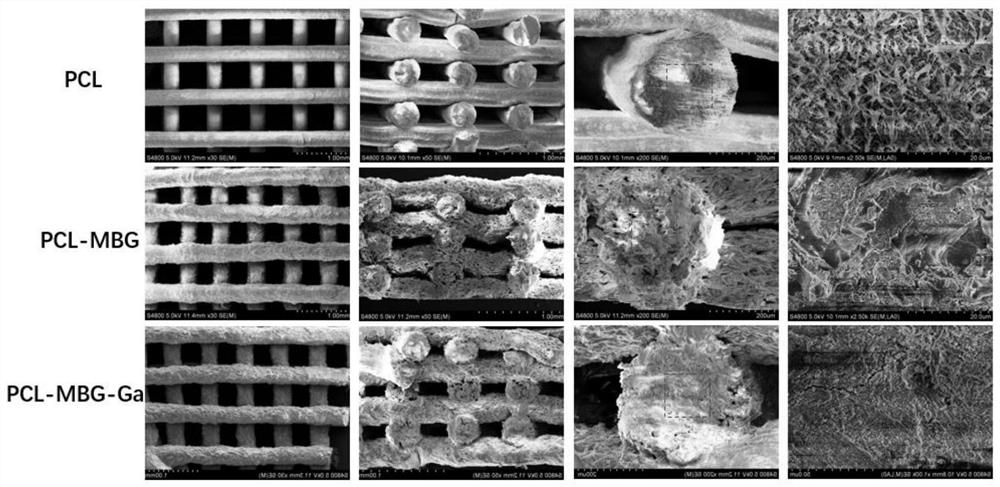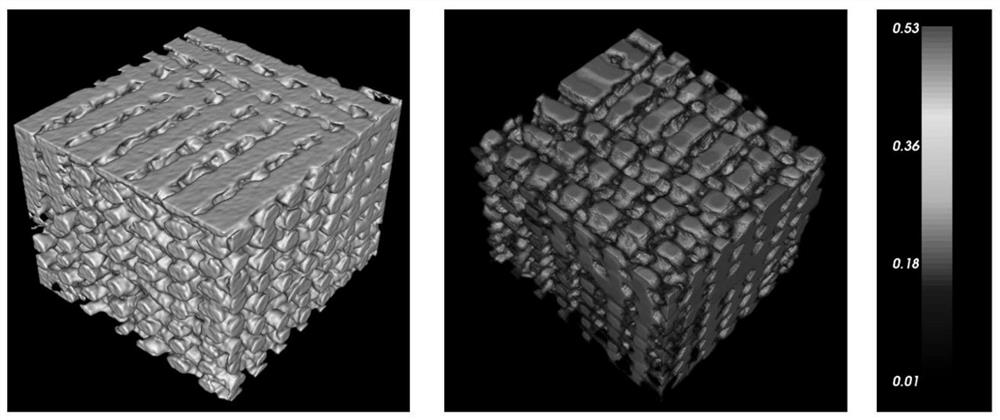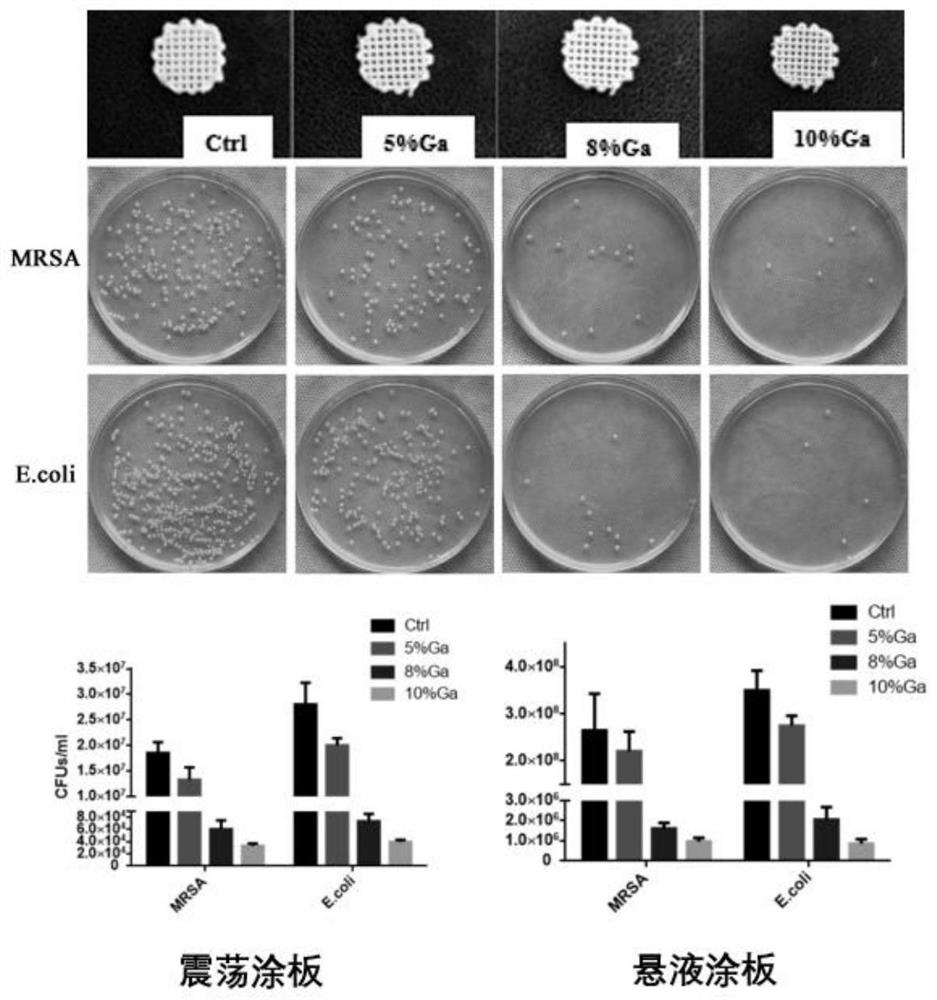Gallium-containing polycaprolactone/bioglass porous bone repair 3D printed scaffold and its application in the repair of infected bone defects
A bioglass, polycaprolactone technology, applied in tissue regeneration, medical science, prosthesis, etc., can solve the problems of easy adhesion, soft tissue damage, and high risk of bacterial exposure, achieve uniform distribution of internal pores, and inhibit osteoclast differentiation. , the effect of promoting osteogenic differentiation
Active Publication Date: 2022-06-10
SHANGHAI NINTH PEOPLES HOSPITAL SHANGHAI JIAO TONG UNIV SCHOOL OF MEDICINE
View PDF7 Cites 1 Cited by
- Summary
- Abstract
- Description
- Claims
- Application Information
AI Technical Summary
Problems solved by technology
In the defect area, especially in the presence of exogenous bone filling materials, there is a high risk of bacterial exposure and easy adhesion
In addition, due to the serious damage to the local soft tissue of the trauma, the ability of the local autoimmune system to eliminate bacteria is reduced, which further increases the difficulty of the treatment of infectious bone defects.
When severe infection exists, a second operation is often required to remove the infected bone filling material, thoroughly debride the wound and eliminate the infection focus, and then long-term high-dose antibiotic treatment will bring serious pain and economic burden to the patient
Method used
the structure of the environmentally friendly knitted fabric provided by the present invention; figure 2 Flow chart of the yarn wrapping machine for environmentally friendly knitted fabrics and storage devices; image 3 Is the parameter map of the yarn covering machine
View moreImage
Smart Image Click on the blue labels to locate them in the text.
Smart ImageViewing Examples
Examples
Experimental program
Comparison scheme
Effect test
Embodiment 1
Embodiment 2
[0045] 2.2 Scanning electron microscope observes the bacterial adhesion situation on the surface of the stent. The experimental operation of co-incubating the scaffold with bacteria is the same as that in 2.1
Embodiment 3
the structure of the environmentally friendly knitted fabric provided by the present invention; figure 2 Flow chart of the yarn wrapping machine for environmentally friendly knitted fabrics and storage devices; image 3 Is the parameter map of the yarn covering machine
Login to View More PUM
 Login to View More
Login to View More Abstract
The invention discloses a gallium-containing polycaprolactone / bioglass porous bone repair 3D printing scaffold and its application in the repair of infectious bone defects. Gallium has good antibacterial properties, and can also inhibit osteoclast differentiation, effectively inhibiting possible osteolysis in bone infection. Bioglass has the ability to promote osteogenic differentiation, and mesoporous bioglass particles have a pore structure that can load components and release them slowly. The invention combines the antibacterial and osteocracking effects of gallium and the osteogenic differentiation promoting effect of bioglass, directly removes local infection foci and further regulates the balance of osteogenesis and osteoclastion in the process of bone repair. The invention applies 3D printing technology and utilizes the good biocompatibility and mechanical support of polycaprolactone to construct a functional bone repair scaffold whose structure can be flexibly designed according to the characteristics of the defect site and whose size is controllable. has important application prospects.
Description
Gallium-containing polycaprolactone / bioglass porous bone repair 3D printed scaffold and its application in infection Application in repair of bone defect technical field The present invention relates to the field of biomedical materials, in particular to gallium-containing polycaprolactone / bioglass porous bone repair 3D Printed scaffolds and their application in the repair of infected bone defects. Background technique [0002] After severe trauma and bone tumor resection, large bone defects can be caused, and bone filling materials are often required for treatment. and The local defect, especially in the presence of exogenous bone filling materials, has a high risk of bacterial exposure and is easy to adhere. and due to trauma The local soft tissue is severely damaged, and the ability of the local autoimmune system to clear bacteria is reduced, which further increases the infectious bone defect. Difficulty of treatment. When severe infection exists, a second oper...
Claims
the structure of the environmentally friendly knitted fabric provided by the present invention; figure 2 Flow chart of the yarn wrapping machine for environmentally friendly knitted fabrics and storage devices; image 3 Is the parameter map of the yarn covering machine
Login to View More Application Information
Patent Timeline
 Login to View More
Login to View More Patent Type & Authority Patents(China)
IPC IPC(8): A61L27/18A61L27/10A61L27/56A61L27/54A61L27/02B33Y80/00
CPCA61L27/18A61L27/10A61L27/56A61L27/54A61L27/025B33Y80/00A61L2300/102A61L2300/404A61L2430/02C08L67/04
Inventor 汤亭亭王敏琪杨盛兵
Owner SHANGHAI NINTH PEOPLES HOSPITAL SHANGHAI JIAO TONG UNIV SCHOOL OF MEDICINE
Features
- R&D
- Intellectual Property
- Life Sciences
- Materials
- Tech Scout
Why Patsnap Eureka
- Unparalleled Data Quality
- Higher Quality Content
- 60% Fewer Hallucinations
Social media
Patsnap Eureka Blog
Learn More Browse by: Latest US Patents, China's latest patents, Technical Efficacy Thesaurus, Application Domain, Technology Topic, Popular Technical Reports.
© 2025 PatSnap. All rights reserved.Legal|Privacy policy|Modern Slavery Act Transparency Statement|Sitemap|About US| Contact US: help@patsnap.com



